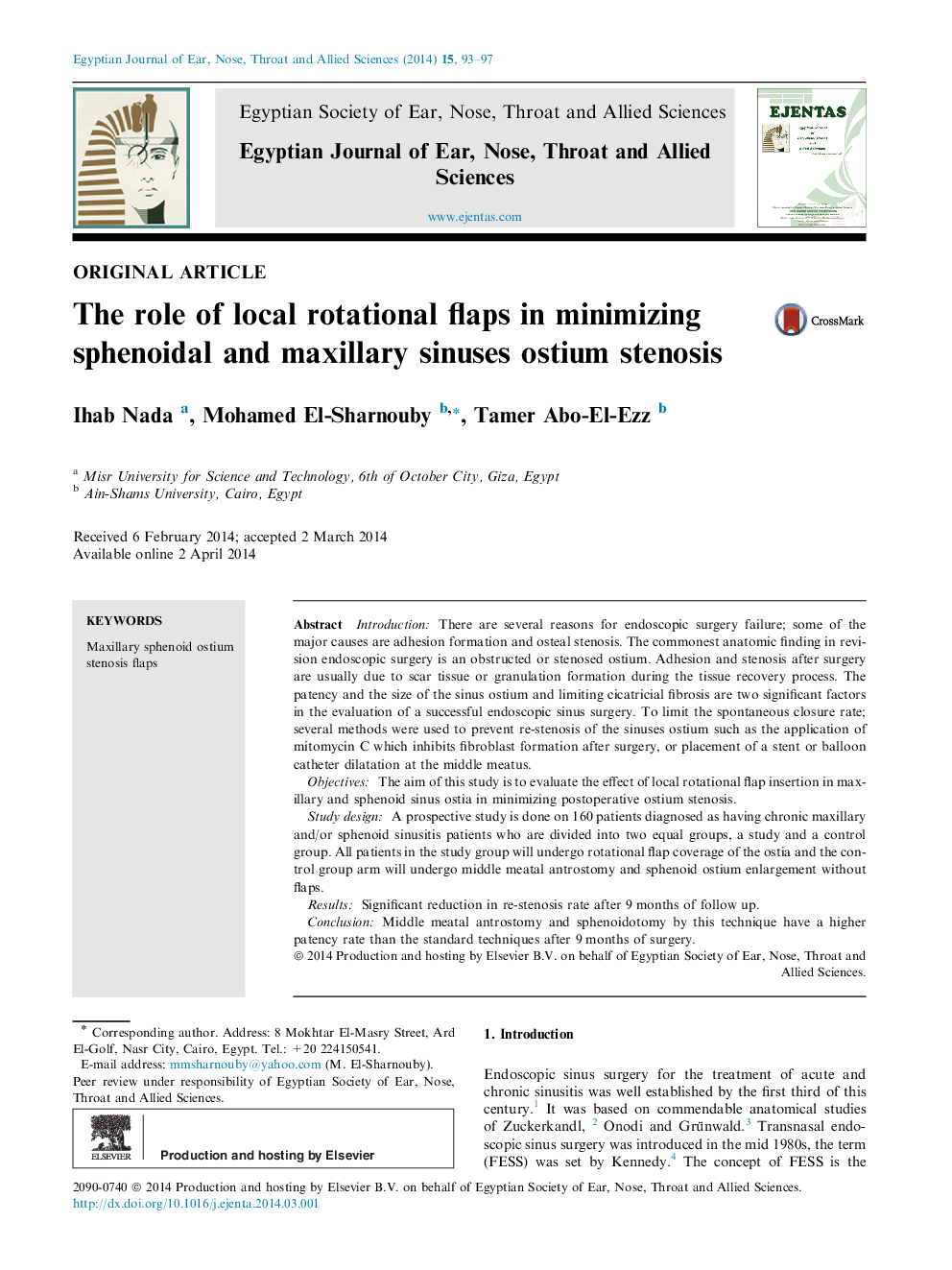| Article ID | Journal | Published Year | Pages | File Type |
|---|---|---|---|---|
| 4108989 | Egyptian Journal of Ear, Nose, Throat and Allied Sciences | 2014 | 5 Pages |
IntroductionThere are several reasons for endoscopic surgery failure; some of the major causes are adhesion formation and osteal stenosis. The commonest anatomic finding in revision endoscopic surgery is an obstructed or stenosed ostium. Adhesion and stenosis after surgery are usually due to scar tissue or granulation formation during the tissue recovery process. The patency and the size of the sinus ostium and limiting cicatricial fibrosis are two significant factors in the evaluation of a successful endoscopic sinus surgery. To limit the spontaneous closure rate; several methods were used to prevent re-stenosis of the sinuses ostium such as the application of mitomycin C which inhibits fibroblast formation after surgery, or placement of a stent or balloon catheter dilatation at the middle meatus.ObjectivesThe aim of this study is to evaluate the effect of local rotational flap insertion in maxillary and sphenoid sinus ostia in minimizing postoperative ostium stenosis.Study designA prospective study is done on 160 patients diagnosed as having chronic maxillary and/or sphenoid sinusitis patients who are divided into two equal groups, a study and a control group. All patients in the study group will undergo rotational flap coverage of the ostia and the control group arm will undergo middle meatal antrostomy and sphenoid ostium enlargement without flaps.ResultsSignificant reduction in re-stenosis rate after 9 months of follow up.ConclusionMiddle meatal antrostomy and sphenoidotomy by this technique have a higher patency rate than the standard techniques after 9 months of surgery.
